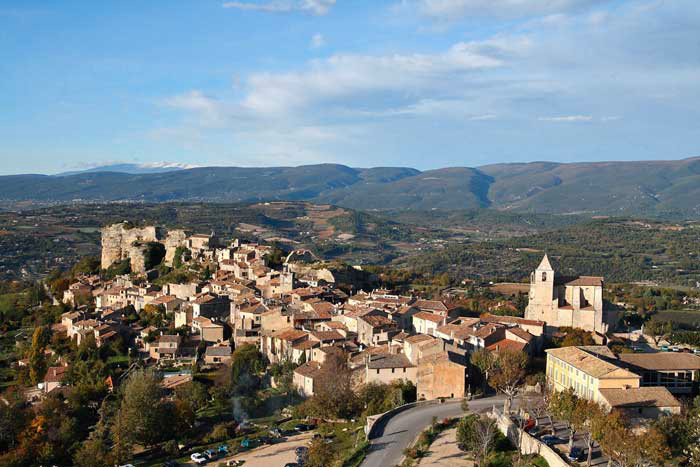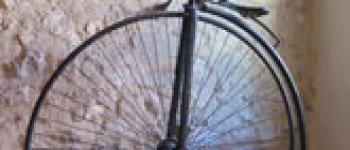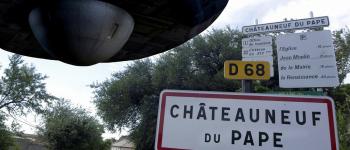
The village of Saignon is located at an altitude of 500 m, limited to the north by the Calavon, to the south by the plateau of Claparèdes and the foothills of the Luberon and crossed by a small stream, the Rimayon.
As the figurehead of this charming village, a natural curiosity, a rock some 30 m high stands out clearly and overhangs the houses of Saignon.
On it remain the vestiges of three castles with two towers and a keep.
A little history
The history of the occupation of the territory of Saignon begins in the Middle Paleolithic (-200 000 years, -35 000 years), many natural shelters having favored the occupation of this territory.
Some Gallo-Greek inscriptions, found in several places, seem to indicate the presence of Celto-Ligurians and an inscription on a wall stone of the church of Sainte-Marie seems to attest it.
From the first half of the 10th century, Saignon appears in the charters of the cartulary of the church of Apt.
In 976, the term "villa" is no longer used for Saignon, but rather "castellum" or "castello" (castle), and then in the 11th century the word "castrum" (rampart).
A concentration in Saignon of castles with different castral forms in such a small area within the same enclosure is a rare if not exceptional case.
Multiple treasures...
The village offers a multitude of treasures that can be admired at the bend of its sloping streets, its flowered squares and fountains - one of which is monumental and adorned with allegorical statues of agriculture and industry, by the sculptor Elzéar Sollier.
Among these treasures, let us quote the church Notre-Dame de Pitié or Sainte-Marie de Saignon, the Abbey Saint-Eusèbe, the oil mill, the bishop's palace, the belfry, the wash-house with three basins, the fountains and the vestiges of the castles, the ramparts...
Let us point out, under the heading of the small heritage, the orientation table, the door of the ramparts, the house close to the chapel, the flight of steps...
The first document on the Saint-Eusèbe abbey dates from 1004 (foundation or restoration act). It was founded by Saint Martian. Pope Urban II consecrated the newly rebuilt church on August 5, 1096. This abbey was sold during the French Revolution and is now privately owned.
The Romanesque church of Notre-Dame or Sainte-Marie de Saignon, established outside the walls, was mentioned in 1155 and 1158 by Popes Pascal II and Adrien IX. Several times modified, it was a place of pilgrimage in the Middle Ages. It contains a reliquary of the Holy Cross. Recently, on May 5, 2001, two documents relating to the true Cross were given to the sacristy of St. Anne of Apt, one dated 1780, the other 1878.
Important ramparts remain on the north side, but it is difficult to know exactly what their perimeter is and to appreciate correctly the evolution of the village during the Middle Ages.
In good weather, from the Rocher de Bellevue de Saignon, you can see the Jardin des Doms in Avignon, follow the Durance River to Caumont and of course admire the Mont Ventoux.
Another treasure to visit is the Potager d'un Curieux, where a lover of biodiversity grows some strange and somewhat forgotten vegetables.
Saignon Town Hall
place de l'église,
84400 Saignon
Tel : 04 90 74 16 30
https://luberon.fr/communes/saignon
Translated with www.DeepL.com/Translator
(free version)





